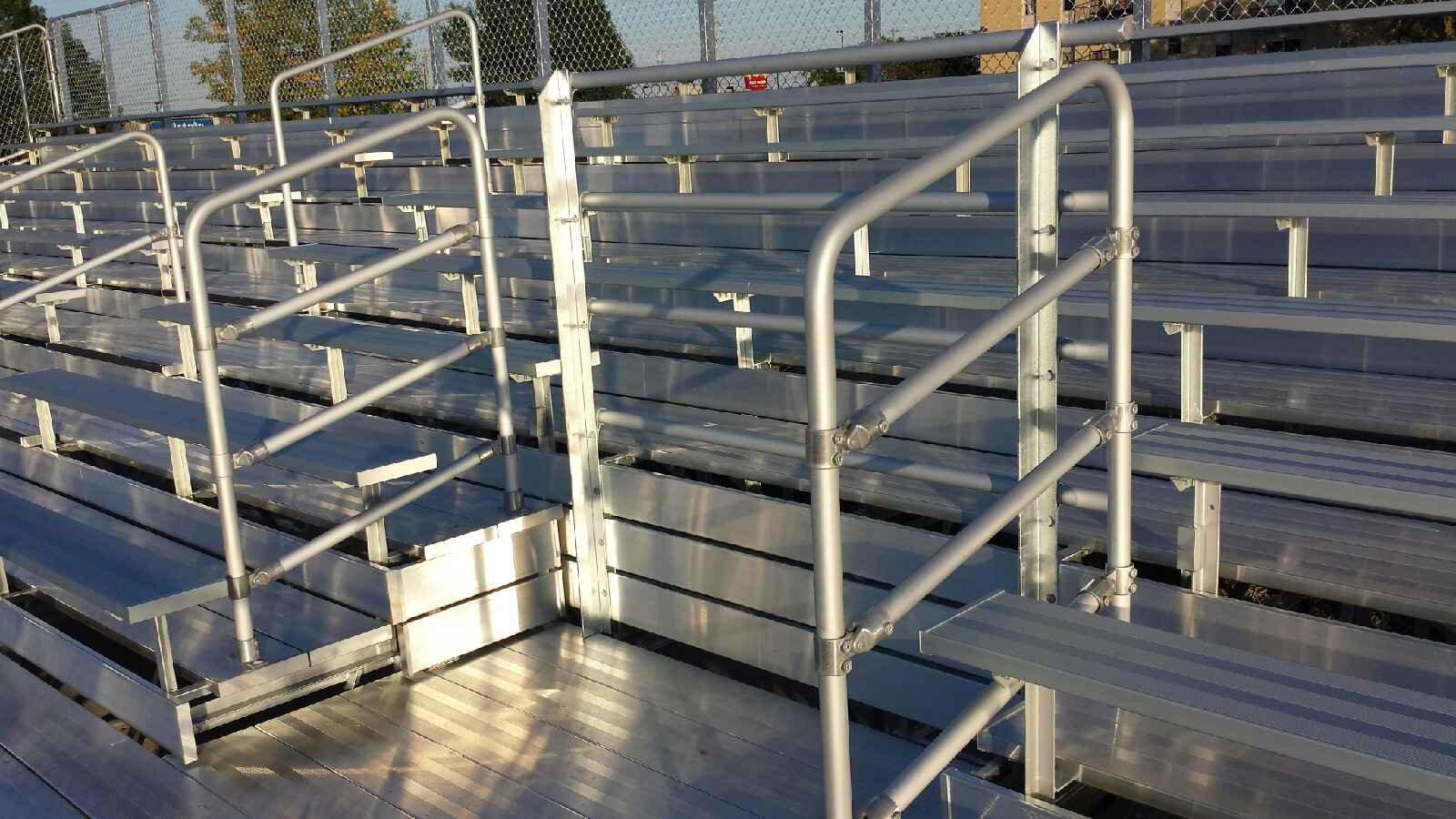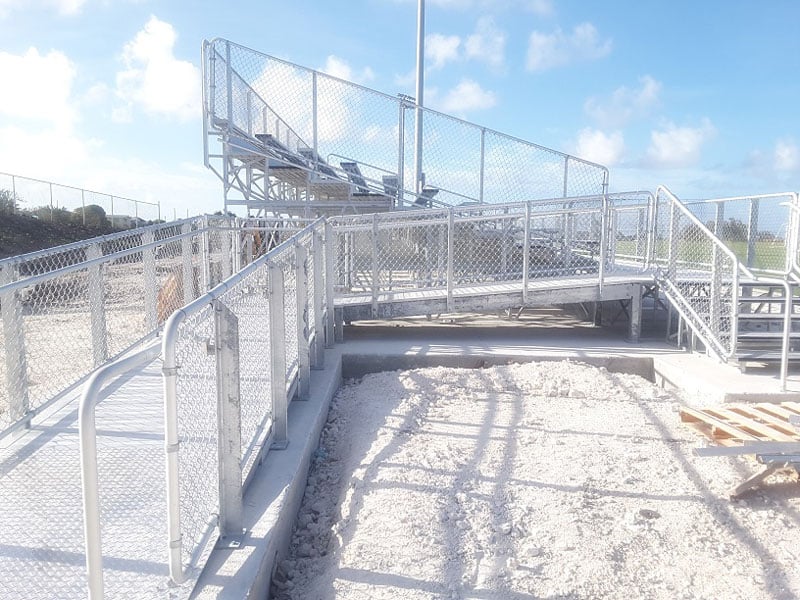
Aluminum bleachers are a popular option for sports and social events because they are convenient and cost efficient. However, due to ADA compliancy regulations, assembly areas in arenas, stadiums and event centres with a bleacher setup, must provide accommodations for wheelchairs and companion seating. This means the addition of not only seating spaces but also ramps and handrails to ensure safe and easy access.
With so many venues having been in existence for thirty years or more, there is a growing concern that these regulations cannot be met without incurring massive renovations and expenses. Some of the older seating designs that are most affected by the recent regulations include telescoping bleachers, fixed stadium seating, outdoor grandstands and auditorium seating.
The required accessibility compliancy is based on the overall seating capacity of the venues. For example, an area with 0-500 seats should provide a minimum of five spaces designated specifically for wheelchair and companion seating. It is possible to retrofit existing bleachers and grandstands with ramps and wheelchair platforms or cutouts. By deciding to retrofit in lieu of opting for new bleachers, the result could be a huge cost savings.

Retrofitting Systems
While making changes to fixed seating may seem relatively simple, redesigning the telescoping seating system and other riser systems require careful adjustments to ensure the structural integrity of the bleacher systems remain intact. These systems have specifically designed moving parts that pose more of a challenge, however, it can typically be accomplished by creating a “cut-out” section in the first row of seating.
Adjusting Aisles
In addition to making the seating upgrades, adequate aisle adjustments should also be made for necessary wheelchair unloading. The aisle adjustments often consist of width adjustments as well as installing ramps and handrails for ADA access.

Line of Sight
Another key factor in retrofitting upgrades is the location of wheelchair accessibility. The ADA requires that disabled spectators have ample visibility and line of sight from the designated locations as well. This is where the need for raised seating may come into play, resulting in ample access and possibly the installation of wheelchair lifts to the areas.
Fortunately, the companies who professionally retrofit bleacher systems will be familiar with the standards that must be met when embarking on redesign plans.
Summary
While new bleacher systems already meet ADA compliance standards,purchasing new systems is not always a viable option for many venues. While these regulations provide the opportunity for family and friends of all physical conditions to enjoy the excitement and entertainment of events such as graduations, weddings, seminars and sports, it does incur expenses for these centres; especially with many bleacher designs having been in place for decades.
Thankfully with retrofitting options available for most bleacher systems, avoiding the purchase of new bleachers generally provides the necessary upgrades for a lot less money.
Accessibility requirements do vary among states and municipalities so be sure to check the regulations for your area.
.png)

